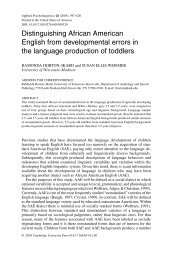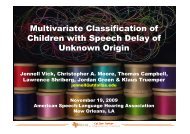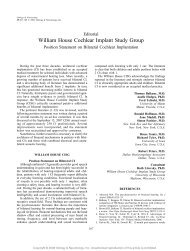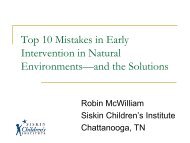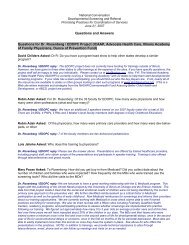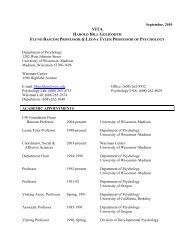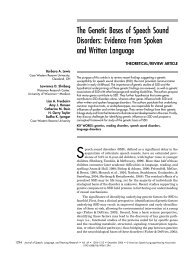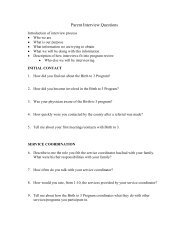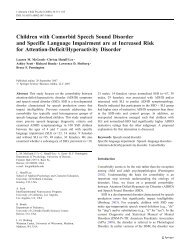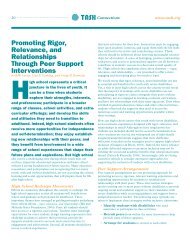Music and Language: A Developmental Comparison - Waisman ...
Music and Language: A Developmental Comparison - Waisman ...
Music and Language: A Developmental Comparison - Waisman ...
You also want an ePaper? Increase the reach of your titles
YUMPU automatically turns print PDFs into web optimized ePapers that Google loves.
Learning <strong>Music</strong> <strong>and</strong> <strong>Language</strong>301who had never heard any of these pieces. As expected, the control groupshowed no preference for excerpts from the familiar versus the novel sonatas.However, the experimental group evidenced effects of their previousexposure to these pieces, showing a significant difference in listening preferencesto the familiar versus the novel sonatas. Subsequent experimentsdemonstrated that the infants were not merely remembering r<strong>and</strong>om snippetsof the music, but instead had represented aspects of the overall structureof the piece, with expectations regarding the placement of particularpassages (Saffran et al., 2000). These results suggest that infants’ musicalmemory may be as nuanced as their linguistic memory.Other recent studies investigating infant long-term memory for musicsimilarly suggest that infants’ auditory representations are quite detailed.For example, infants can represent more complex pieces of music, such asRavel piano compositions, in long-term memory (Ilari & Polka, 2002).Moreover, the content of infants’ memories include some extremely specificaspects of musical performances. Ten-month-olds represent acousticpatterns drawn from the specific performances with which they were previouslyfamiliarized (Palmer, Jungers, & Jusczyk, 2001). Six-month-oldinfants remember the specific tempo <strong>and</strong> timbre of music with which theyare familiarized, failing to recognize pieces when they are played at newtempos or with new timbres, although recognition is maintained when piecesare transposed to a new key (Trainor et al., 2002). It thus appears thatinfant representations are extremely specific, not affording the opportunityto generalize to include changes in tempo or timbre. This level of specificitymust change with age, as either a function of experience or development,else listeners would not be able to recognize familiar music played on differentinstruments or at different rates. It should be noted, however, thatthe ability to remember specific performance characteristics like key, tempo,<strong>and</strong> timbre is not lost completely during development (Levitin, 1994, 1996;Palmer et al., 2001; Schellenberg, Iverson, & McKinnon, 1999; Schellenberg& Trehub, 2003). The ability to encode music abstractly complements thecapacity to engage in absolute encoding.Similar shifts in specificity obtain for linguistic materials. For example,7.5-month-old infants include talker-specific cues in their representationsof spoken words; they have difficulty recognizing words when they arespoken in new voices, whereas 10.5-month-olds do not (Houston & Jusczyk,2000). However, even younger infants are able to ignore talker-specificproperties under other circumstances—in particular, infants readily exhibitvowel normalization, categorizing individual exemplars according to vowelidentity despite differences in speaker sex (Kuhl, 1979, 1983). Infants thusappear to process linguistic auditory events at multiple levels of detail simultaneously.We see similar abilities to track multiple levels of informationin the domain of pitch perception; in some tasks, infants appear totrack absolute pitches, with no evidence of relative pitch representations



